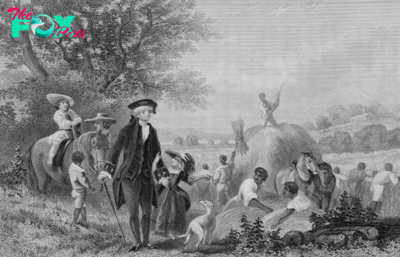History
History Shows Why So Many Voters Think Donald Trump Has the Character to Be President
Donald Trump has a “character” problem. In an interview at the National Association of Black Journalists Convention on July 31, Trump claimed, falsely, that his opponent, Kamala Harris, had identified as Indian “until a number of years ago when she happened to turn Black… now she wants to be known as Black. So, I don’t know, is she Indian or is she Black?”
In reality, Harris has never said she was anything other than both Indian and Black.
For Trump, this was only one moment in a well-documented history of public falsehoods, highlighted by his oft-repeated lies that he won the 2020 election, despite over 60 failed court challenges. While Trump was President, the Washington Post famously kept a running total of his false statements that reached into the thousands.
Yet the election remains close. How is it possible that voters have come to discount lying? Doesn’t “character” make a difference?
If history is a guide, it’s not that character doesn’t matter. It’s that voters see “character” very differently than do pundits.
Historian Richard White has explained that in the “Gilded Age” in the late 19th century, judgments of the “character” of business and political leaders had little to do with their honesty and integrity. Instead, because lying was so endemic, leaders were judged on whether they appeared forceful and dependable in achieving things. “Character” meant getting things done while exhibiting strength.
Understanding character this way explains how Trump can spin out false statements about just about everything, yet enjoy considerable support from voters. This approach to “character,” however, also provides clues as to how Democrats can more effectively attack Trump and undermine his support.
Read More: In Bid for Immunity, Trump Distorts the History of His Second Impeachment
The definition of achievement-based “character” developed in the corrupt Business world of late 19th century America. Despite pervasive lying, Businessmen had to have a way to judge whether they could do Business with others. Public information was often manipulated and worthless, so entrepreneurs needed to consider who was making claims, why they were being made, and, most importantly, what the consequences were or would be. Many concluded that what mattered was what people did, not what they said. You could do Business with someone who could dependably and forcefully make things happen.
And, amazingly, this system worked as the late Industrial Revolution built enormous, dominating companies. Character — just not the kind reflecting honesty and integrity — counted.
Nowhere was this clearer than in the construction of the Transcontinental Railroad. The often-corrupt construction managers building the Central Pacific from the west and the Union Pacific from the east, including Charles Crocker, Grenville Dodge, and others, achieved impossible things. Those feats included tunneling through the Sierra Nevada mountains and laying track across the endless Great Plains.
But estimates are that close to half of the nearly $100 million cost of the construction was diverted into the pockets of railroad executives and others. To ensure a continued flow of public funds, the Union Pacific’s construction agent, Credit Mobilier — whose board was identical to that of the railroad — attempted to bribe congressmen. They offered 10 shares of stock, which appeared to be a modest bribe. But it promised total annual dividends larger than a congressman’s entire government salary of $5000!
Crocker and his colleagues in the Central Pacific also never kept track of the many Chinese workers who died building the railroad. Nor did the Union Pacific pay the Mormon workers who completed it.
Yet when the Golden Spike was driven at Promontory Point in 1869, joining the two railroads, it kicked off a jubilant celebration across America. The men in charge had great character; they got something monumental done.
This conception of character extended to the titans of industry whom historian Matthew Josephson labelled “robber barons” because of their conduct. In roughly three decades at the end of the 19th century, John D. Rockefeller created a vast near-worldwide monopoly in oil. Cartoons depicted him as a massive octopus ensnaring and crushing his enemies. But even muckraker Ida Tarbell’s otherwise scathing History of the Standard Oil Company praised Standard Oil’s organizational ability to get things done. No one could compete with Standard; Rockefeller reliably rolled over all opposition. His peers admired him for his character, even if the public saw him far more negatively.
Andrew Carnegie, by contrast, had a much more checkered reputation. But it wasn’t because of a lack of ethics per se. Instead, it was because Carnegie was unreliable — some refused to deal with him because he was prone to cheating.
To build the St. Louis bridge, for example, Carnegie’s Keystone Bridge Company purchased the necessary iron from Carnegie himself. He also earned a handsome commission for selling bridge bonds, profiting multiple ways. To protect his iron Business, Carnegie repeatedly pressured the engineer, James Buchanan Eads, to use iron instead of steel for key structures — Carnegie was not yet known for steel. He even refused to open the bridge when it was done, having his Keystone men tear up the approach roads, delaying until all payments owed to Keystone for the construction were made. Eads’s bridge turned out to be an engineering triumph, but, among Carnegie’s peers, its completion gave little luster to his perceived character.
In another later scheme, Carnegie lied to railroads who bought his rails about a competitor’s innovative steelmaking process. He claimed that its rails lacked “homogeneity,” a made-up term. Afraid, the railroads stopped buying those rails. The competing mill consequently failed, Carnegie snapped it up — and then installed the process in his own mills.
The treatment of Henry Clay Frick, chairman of Carnegie Steel, revealed that it wasn't the company’s ruthless business practices that tarnished Carnegie’s own reputation. Frick relentlessly drove most unions from the company. It took 45 years — and an act of Congress — before they returned. Yet, Frick was viewed as a man of high character.
Why? Because by the end of the 19th century, Carnegie Steel was producing more steel than all of Great Britain. Frick got the job done.
Read More: Trump Is Lying to His Supporters About Gag Orders
Perhaps financier J.P. Morgan was the best example of how the two different understandings of character could co-exist. Americans reviled Morgan as the puppetmaster of the “money center.” Yet he prevented an international gold drain from causing the country’s bankruptcy in 1895, and his aggressive actions ended the Panic of 1907. In both cases, Morgan was successful because others in government and in the banking industry believed that he'd act with character.
In dramatic testimony before a congressional committee in 1912, Morgan spoke to the importance of such perceptions. He claimed that the first thing upon which commercial credit was based was “character” — not money or property. Money could not buy commercial credit, the financier explained, “because a man I do not trust could not get money from me on all the bonds in Christendom.”
Morgan’s response was celebrated as an expression of the importance of trust and integrity in business. But he may just have been referring to forceful, assured dependability — was the person sufficiently strong and reliable to repay a loan?
People would lie, but if you could rely on them to get things done, they had character all the same.
This conception of character is relevant today because many voters don't pay close attention to politics and lack knowledge of how government works. When candidates or elected officials make claims and counterclaims, they lack the information and expertise to judge who is right and who is wrong.
What they can gauge are tangible actions by politicians that affect them. Research in political Science has established that voters value the “constituency services” that their elected representatives provide — the benefits brought to the district, as well as the elected official’s help with the personal, family, and Business issues created by government programs, ranging from Social Security to veteran’s benefits to Business regulation. As a result, voters say, paradoxically, that they like their own, very helpful representative — but, as for Congress as a whole — well, they are wasteful and corrupt, much deserving of being turned out of office.
Judgments of candidates, therefore, don't depend on whether they offer enticing policy options or even tell the truth. Trump’s sustained popularity exposes this reality. Instead, many Americans focus on whether a candidate appears to be someone who can forcefully, dependably get things done for them.
By this Gilded Age metric, Trump superficially passes the “character" test. He’s the classic Gilded Age businessman. He takes credit for grandiose achievements — whether he's actually responsible for them or even when he’s done nothing at all. He claims to have been the greatest President for Black Americans since Abraham Lincoln, to name but one dubious boast.
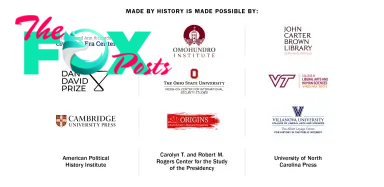
Yet, Trump might not have gotten far in business or politics in the late 19th century. Despite his boasts, Trump hasn’t actually delivered the consistent results that he claims. And that creates an opening for Democrats.
They regularly point to Trump’s lies. But the Gilded Age tells us that for Harris to win, she has to destroy the confidence that voters place in Trump’s ability to get things done — his image as a forceful leader who achieves things. Doing so will sour voters on him far more than assailing Trump for cruelty or calling out lies. Voters care far less about such matters than they do about a candidate they believe will make a real difference in their lives.
Barry M. Mitnick is professor of organizations and entrepreneurship, and of public and international affairs at the University of Pittsburgh. In 2019, his business history course, Market Manipulations, was recognized by the Aspen Institute with an Ideas Worth Teaching Award—one of only 10 courses worldwide to be selected.
Made by History takes readers beyond the headlines with articles written and edited by professional historians. Learn more about Made by History at TIME here. Opinions expressed do not necessarily reflect the views of TIME editors.
Correction, Sept. 12: The original image that appeared with this story contained a photo of J.P. Morgan Jr., not J.P. Morgan Sr. This has been replaced.
-

 History1d ago
History1d agoHow Celebrities Changed America’s Postpartum Depression Narrative
-
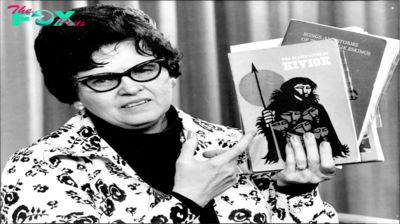
 History2d ago
History2d agoThe Woman Whose Crusade Gave Today’s Book-Banning Moms a Blueprint
-
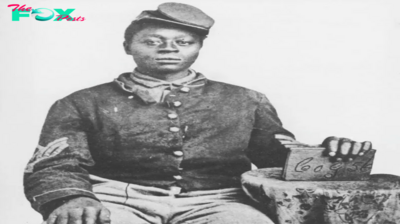
 History6d ago
History6d agoHow Black Civil War Patriots Should Be Remembered This Veterans Day
-
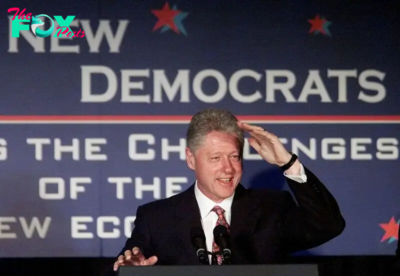
 History1w ago
History1w agoThe Democratic Party Realignment That Empowered Trump
-
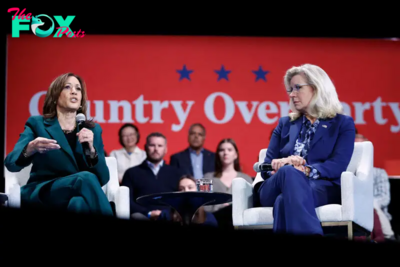
 History1w ago
History1w agoWhy People Should Stop Comparing the U.S. to Weimar Germany
-

 History1w ago
History1w agoFlorida’s History Shows That Crossing Voters on Abortion Has Consequences
-

 History1w ago
History1w agoThe 1994 Campaign that Anticipated Trump’s Immigration Stance
-

 History1w ago
History1w agoThe Kamala Harris ‘Opportunity Agenda for Black Men’ Might Be Good Politics, But History Reveals It Has Flaws


